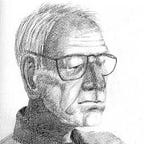Munich’s Olympic Park
On a pleasant summer day I headed for the Munich Olympia Park, site of the 1972 Olympic games. It is a large park adjoining the BMW Headquarters and museum. The imposing site of the modern BMW Tower is overshadowed by the iconic tent-like structures built 45-years-ago to celebrate the Olympic games. The park is a rolling series of hills criss-crossed with biking and walking trails and assorted venues that still play a role in Munich’s public sporting and cultural life. I was amazed to realize while wandering up and down park trails that much of the land contours are man-made, the result of rubble from the WWII destruction of Munich. The rubble was collected, sculpted, and covered with soil and plantings into a beautiful and comforting park. Overlooking the park grounds are canopies of acrylic glass panels held together by steel cables and projecting a 1972 symbol of a modern and optimistic Germany that persists to this day.
I frequently visit Munich for just such sights of optimism in a complex and increasingly dangerous world. My summer nesting grounds are spent in a small farming village in Lower Bavaria far different from cosmopolitan Munich in Upper Bavaria. The difference between Upper and Lower Bavaria is in itself an interesting cultural distinction that has crept into casual observations. Originally the distinction was simply a recognition of elevation difference. The Munich region initially grew with commercial links across the Alps to Italy while at lower elevations the adjoining region expanded an agrarian rural lifestyle eventually leading to a cultural divide. The Kings of Bavaria and the accompanying aristocracy settled in Upper Bavaria creating a cosmopolitan society. This led to something of a good-natured snobbery between Upper and Lower Bavaria — much like the differences between uptight New Englanders and cowboy Texans. One striking observation of this divide is the frequent sightings of confederate flags in Lower Bavaria and their absence in Upper Bavaria. Much to think about.
Ignoring these class distinctions, I continued my wandering between sighting street art in cosmopolitan hecticness and watching corn grow quietly on rural farmlands.
The Olympic Park was hosting an art festival called Magic City. It was installed in the basement of a building dug out of the WWII rubble. A fitting venue for the imaginative and and somewhat anarchic nature of “street art.” The curator, Carlo McCormick said, “Our Magic City is a place and a non-place. It is not a physical city of brick and mortar but rather the urban space of internalized meaning. It is the city as subject and canvas, neither theme park or stage set, but an exhibition showcasing some of the most original and celebrated artists working on and in the city [Munich] today . . .. We have asked these many artists to help us with an eye to the contrasts offered up by the heterogeneity, because the truth is not always a matter of common consent but is more likely forged in a crucible of differences and spoken in the polyglot.”
The polyglot reference is fitting in the current atmosphere swirling around the immigrant wave that has been absorbed by Bavaria and the rest of Germany with good intentions and some alarm.
The following is a small sampling of street art in the Magic City.
